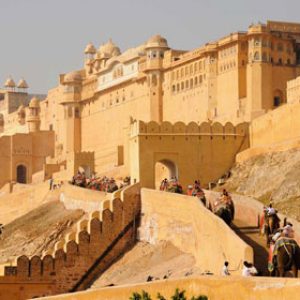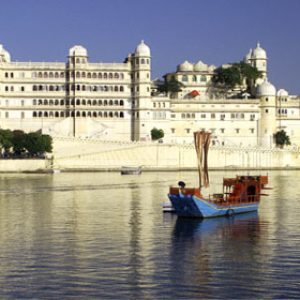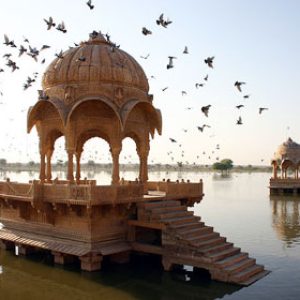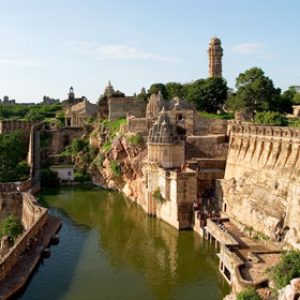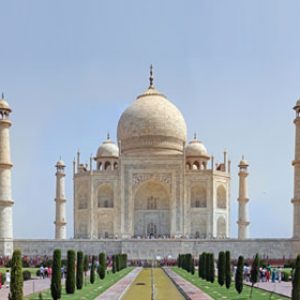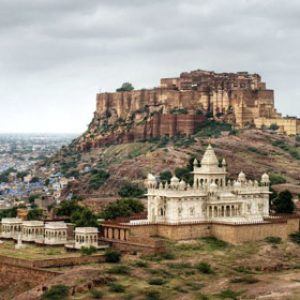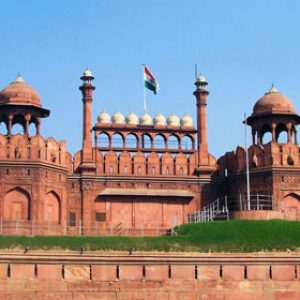The imperial city of the Mughal dynasty between 1571 and 1584, Fatehpur Sikri was built by Mughal Emperor Akbar. The architectural grandeur of this deserted city cannot be described in words and one can only experience the aura of its magnificent edifices by seeing them. Fatehpur Sikri is the most popular day excursion from Agra, the city of Taj and capital of invincible Mughals for a long time.At a stone throw away from the city of the Taj Mahal is the fantabulous city of Fatehpur Sikri. The short distance of forty kilometres from Agra makes it the first choice for the tourists. The city was built way back in the 16th century by the Mughal emperor Akbar. Once abandoned by the emperor in 1585 the city could never again regain its lost glory. Fatehpur Sikri has the enchanting examples of architectural excellence. The entire city carries the aura of the magnificent monuments.
Even though the splendid life of Fatehpur Sikri was short it was stupendous enough to make it attract tourists for ages to come. The ghost city will always boast of its magic and the marvellous works of art. Amongst the must visit are the Diwan-I-Khas, the Diwan-I-Aam and the tomb of Sheikh Salim Chisti. The life and times of Akbar seem to greet you at all the corners of the city. Talking of Sheikh Salim Chisti it is worth mentioning that Fatehpur Sikri was a tribute by Emperor Akbar to his patron saint Sheikh Salim Chisti. The tomb of the saint is in red sandstone though later Jehangir got the edifice covered in white marble. It is believed that owing to the blessings of the saint, Akbar was blessed with three sons. Till date the faith is retained and childless women seek the blessings of Sheikh Salim Chisti and tie a coloured thread and return whenever their wish is fulfilled.
Amongst the first constructions of the Fatehpur Sikri is the Jama Masjid. The mosque was built in 1571. Though its first sight won’t sweep you off your feet the beauty of its interiors surely will. The combination of the colours used by the craftsmen with brown, red, turquoise; white and black lends an amazing effect to the Jama Masjid. The mosque is known for its architectural and historical significance. The huge courtyard was used by thousands of men including Akbar to say their prayers. The mosque was modelled on the Bibi Khanam’s mosque in Samarkand.
As you arrive at the city of the Fatehpur Sikri from the Agra Gate, you will come across the hall of public audience or the Diwan-I-Aam. The walled courtyard was used for the public announcements, judgments and recreational activities. It is followed by the hall of private audience or the Diwan-I-Khas. The royal enclosure has some superb sculptures with a stone column right at its centre.
Since it is the history of Akbar the great that will knock on the door at all the places of Fatehpur Sikri you cannot miss the Buland Darwaza. The magnanimous arch was constructed in the year 1575 to commemorate the success of Akbar’s invasion over Gujarat. The huge arch of 176 feet is an exemplary instance of the Mughal architecture.
The other must visit is the Anup Talao. It is famous for its association with the great musician Tansen in the court of Akbar. The ornamental tank was used to dole out coins in gold, silver and copper to the poor on special occasions. The visit to Fatehpur Sikri after the Taj Mahal will for sure be fruitful for all who opt for it.



